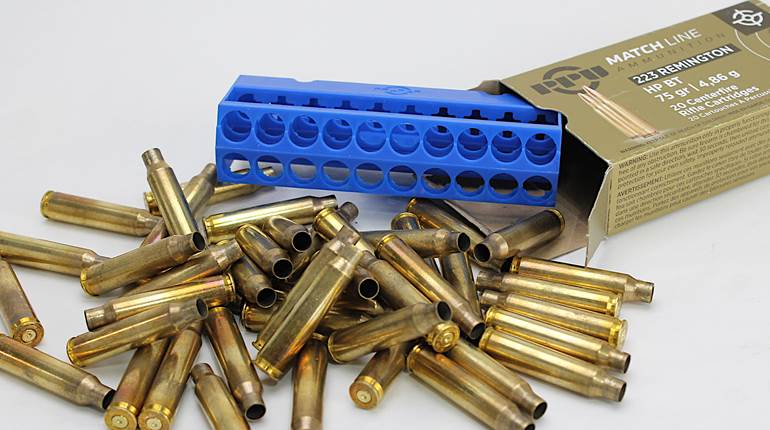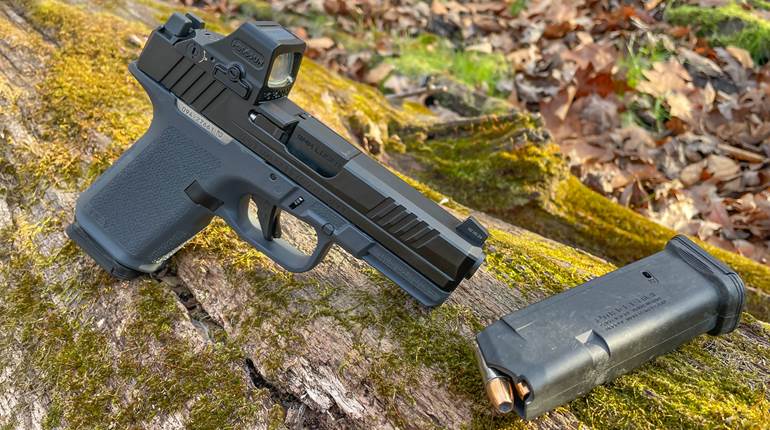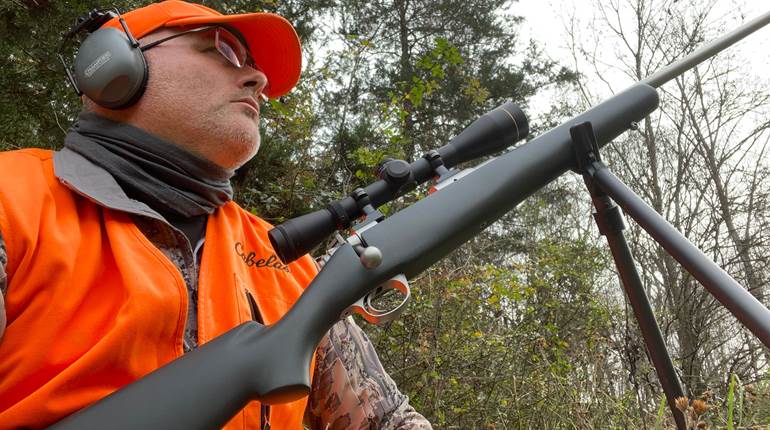
Speer’s rifle bullet lineup is one of the most all-encompassing in today’s marketplace. As such, its parent company, ATK, has maintained a relative hands-off approach since acquiring it in 2001. For 2010, though, in an effort to strengthen and redefine the Speer brand, its diverse big-game bullet product lines are being reorganized, and there’s a new projectile, DeepCurl, which is set to replace at least one of its hallmark offerings.
Past Designs
Since Speer’s beginnings, its bread-and-butter bullet has been the Hot-Cor, which is created by pouring molten lead-alloy into a gilding-metal jacket. The technique avoids a lubricated, pre-formed core and eliminates trapped air, preventing oxidation, and since both oxidation and lubrication contribute to jacket-core separation, the flat-base projectile typically maintains 70 to 75 percent of its original weight. Even 80 percent weight retention isn’t uncommon. Because of this, Hot-Cor bullets are suitable for a variety of game that can be taken by a given caliber if a bullet of sufficient weight is selected. Best of all, Hot-Cor projectiles are relatively inexpensive.
Speer’s Boat Tail bullet, which features a heel tapered at an angle upward of 13 degrees for an increase in ballistic coefficient, does not use the same manufacturing process as its Hot-Cor sibling. As such, its expanded diameter is greater, and weight retention and penetration are slightly less; however, the tapered jacket with a heavy shank reduces the chance of the jacket rolling back on the heel and thus jacket-core separation. Typical weight retention is 65 to 70 percent. Speer Boat Tail bullets are best used on game for which deep penetration isn’t as critical, maximum tissue damage is desired, and long-range shots are probable. The latter is where the increased BC flattens trajectory and resists wind deflection better than Hot-Cor bullets. Like the Hot-Cor, the Boat Tail is competitively priced.
Hunters desiring better and more consistent terminal performance than that offered by Hot-Cor and Boat Tail bullets have options in the Mag-Tip and Grand Slam. What about the famed Trophy Bonded Bear Claw and Trophy Bonded Sledgehammer? As of this year, the TBBC and TBSH are now under the Federal Premium banner, so they’re no longer Speer products.
Manufactured via the Hot-Cor process, but featuring a full-length (protected nose), tapered gilding-metal jacket with a thicker shank than a Hot-Cor of identical weight and caliber, the Mag-Tip maintains upward of 85 percent of its original weight for deep penetration. Its tougher construction also enables its use in high-velocity cartridges; however, because it has internal fluting and a large meplat, Mag-Tip offers more reliable expansion at lower velocities. The cost of the Mag-Tip’s profile is a loss of aerodynamic qualities—i.e., the bullet’s ballistic coefficient is lower than that of the Grand Slam. There is a cannelure for crimping. Mag-Tip is a versatile bullet capable of taking medium and large game alike. Although slightly more expensive than either Hot-Cor or Boat Tail bullets, the difference in terminal ballistics more than warrants the additional cost.
With the exception of those in .24 and .25 caliber, which always featured a one-piece core, original Grand Slam bullets had a two-piece core with the rear being harder than the front. Now, Grand Slams feature a three-component core that is poured into the gilding-metal jacket and flows into a heel pocket. Essentially, the Hot-Cor process, along with the added mechanical lock (at the heel) and thick shank, results in 80 to 85 percent weight retention. Internal fluting makes upset possible at a wide range of velocities, and a higher ballistic coefficient than Mag-Tip slightly flattens trajectory. Grand Slams have a cannelure for applying a crimp and are suitable for the largest game in a given cartridge’s application; however, with the enhanced performance comes a significant increase in price.
DeepCurl
In the age of “bonding,” yet also belt-tightening, the demand for an affordable bonded-core bullet didn’t go unnoticed. Speer’s answer is DeepCurl. Using plating technology utilized in other ATK products, the bullet features a lead-alloy core with an “electro-chemically bonded” jacket, thereby ensuring a high percentage of retained weight; in fact, DeepCurl typically retains 85 percent or better of its pre-expansion weight, which in most cases is better than that of Grand Slam. At velocities 3,000 fps or higher, retained weight is a bit less. With this, the flat-base bullet—with a dimple to keep the heel uniform for better accuracy—has internal skiving for pre-programmed expansion at varying velocities. DeepCurl’s expanded diameter will typically be greater than that of the Grand Slam and will certainly influence penetration. DeepCurl is absent a cannelure.
In July 2009, Speer invited other writers and myself to test the yet-to-be-named projectile in Lewiston, Idaho. While there, the bullet design was tested in 10-percent ordnance gelatin at 100 yards from a .30-’06 Sprg. The first 180-grain DeepCurl penetrated through one 16-inch block, and several inches into a second, before stopping. The recovered projectile weighed 175.3 grains and exhibited a picture-perfect, five-petal shape, measuring 1.066 inches at its widest. More telling of its integrity, though, was when a participant sent a bullet low, driving it through the Plexiglas frame and into the gelatin, and it too exhibited good weight retention. Whatever animals Mag-Tips and Grand Slams are suitable for, DeepCurl will prove just as effective. Remember, though, at velocities greater than 3,000 fps, DeepCurl’s weight retention will be less.
More recently, I tested the same 0.308-inch, 180-grain DeepCurl through two different rifles to evaluate the bullet’s accuracy potential. In a .308 Win.-chambered T/C Icon, the optimal load featured 41.5 grains of Hodgdon Varget propellant, a Federal Gold Medal 210 Match primer, a Lapua case and the bullet seated to give a 2.800-inch overall length, and produced a five consecutive, five-shot-group average of 0.94 inches. As tested through an RCBS AmmoMaster chronograph, the load had an average velocity of 2,450 fps at 10 feet for 10 shots, and posted a Standard deviation (Sd) of 11.
From a Nosler Model 48 Trophy Grade Rifle in .300 WSM, the same bullet combined with 64.0 grains of Reloder 17, a Federal 215 primer, a Federal case and seated to give a 2.860-inch overall length, averaged 1.14 inches for 25 shots. The velocity was 2,989 fps, and the Sd was 9.
Additionally, I selected 10 random 180-grain DeepCurl bullets and weighed them to evaluate consistency. The lightest three weighed 179.6 grains, and the heaviest 180.5 grains, while the average was 179.88. For comparison, I also weighed 10 Combined Technology (CT) 180-grain Ballistic SilverTips (BST), which averaged 179.95 grains. The lightest CT BST was 0.3 grains less than the listed weight, while the heaviest two were 0.1 grains more. Based on this data, the DeepCurl offered respectable bullet-to-bullet consistency.
How does the DeepCurl’s price compare to its siblings? When comparing prices on MidwayUSA’s website recently, 180-grain Hot-Cor round-nose projectiles cost $26.49 for 100, while 180-grain Grand Slam jacketed soft-points were $29.49 for 50. While on sale, the 180-grain DeepCurl soft-point bullets cost $26.45 per 100, and $30.49 at regular price. For the minimal additional cost (regular price) over Hot-Cor, the shooter gains a lot with DeepCurl. When compared to Grand Slam, DeepCurl also easily gets the nod.
DeepCurl rifle bullets are available in calibers and bullet weights from 80-grain 0.243 inches to 225-grain 0.338 inches. Most offerings are heavy-for-caliber, such as 140-grain 0.264 inches, 150-grain 0.277 inches and 160- and 175-grain 0.284 inches, but there are uncommon versions as well, such as a 110-grain round-nose 0.308 inches. M1 Carbine anyone? There are even 150- and 170-grain flat-nose versions suitable for the .30-30 Win. Bullets are sold in packages of 100, except for 0.338 inches, which is available in 50-count boxes.
Sometimes change is for the better, and such is the case with DeepCurl. Although Hot-Cor will surely be missed, its replacement is better with regard to terminal ballistics. Hunters who field them will surely agree. So what does the future hold for Speer’s other big-game bullets? Only time will tell.






































